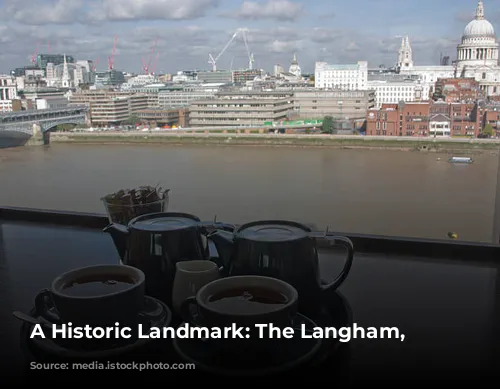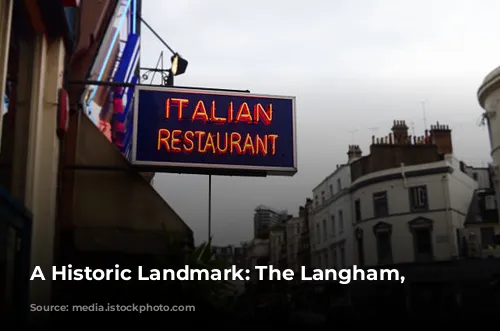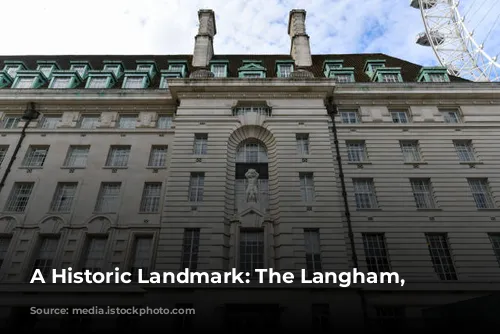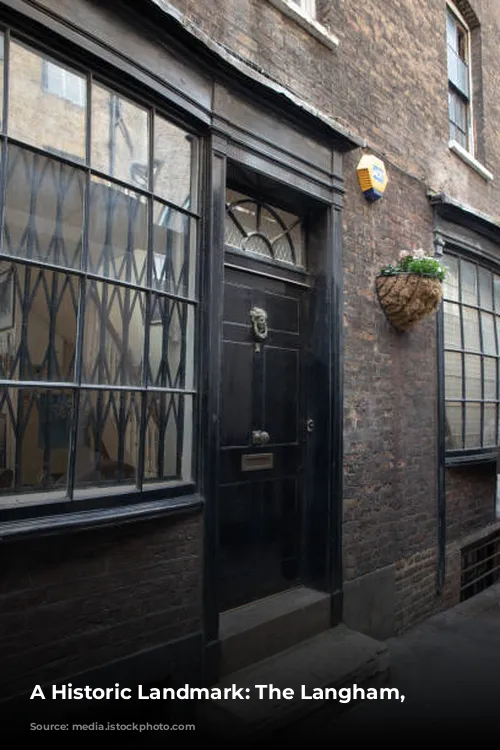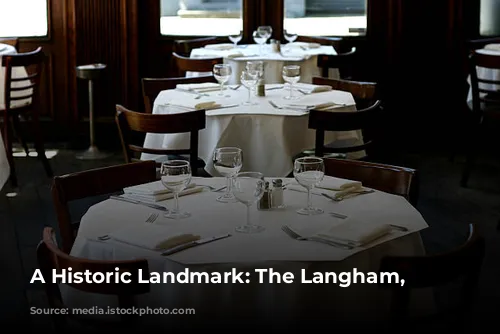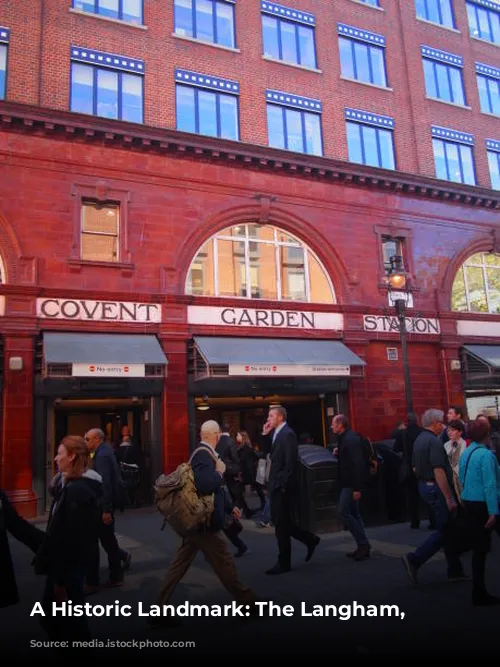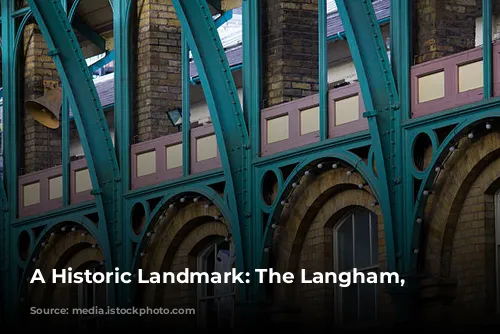Welcome to the fascinating world of The Langham, London, a hotel that has witnessed history unfold over the past century and a half. This iconic landmark is not just a place to stay, it’s a living testament to elegance, innovation, and the vibrant spirit of London.
A Grand Opening and Early Success
The Langham, a five-star hotel situated in the Marylebone district, stands proudly on Langham Place. This architectural gem, designed by John Giles and completed in 1865, was a groundbreaking achievement for its time. The hotel was considered the largest and most advanced in London, boasting a remarkable array of modern amenities, including 100 water closets, 36 bathrooms, and the first hydraulic lifts in England. Its grand opening, graced by the presence of the Prince of Wales, signaled the beginning of a legacy.
Despite a brief period of financial uncertainty, the Langham quickly rose to prominence, becoming a haven for discerning travelers and high-society figures. Its charm and reputation for exceptional service attracted a diverse clientele including American celebrities like Mark Twain and the financier Hetty Green. The Langham also welcomed international dignitaries, artists, and musicians, further solidifying its position as a center of cultural and social life.
A Century of History and Transformation
The Langham’s story continued to unfold throughout the 20th century. It remained a favorite among members of the royal family, prominent politicians like Winston Churchill and Charles de Gaulle, and renowned figures like Noël Coward and Wallis Simpson. The hotel’s enduring allure attracted guests from all walks of life, including the Emperor Haile Selassie of Ethiopia and the Japanese pop star Ayumi Hamasaki.
The Langham, like many businesses, faced challenges, weathering the Great Depression and the devastation of World War II. It was briefly occupied by the British Army during the war and later became temporary accommodation for the BBC. The BBC eventually purchased the hotel in 1965, marking a significant shift in the Langham’s narrative.
A New Era of Luxury and Hospitality
The BBC’s ownership brought a different kind of activity to the Langham. It was used as ancillary accommodation for BBC staff, with the Palm Court transformed into a reference library and the restaurant into a staff bar and refreshment room. The BBC’s plans to demolish the hotel and replace it with an office development in 1980 were met with resistance, thankfully, and the Langham was saved.
The Langham’s fate took another turn in 1986 when the BBC sold the property to the Ladbroke Group. After extensive refurbishment, the hotel reopened in 1991 as the Langham Hilton, a testament to the enduring appeal of this grand old building. In 1995, the hotel was acquired by Hong Kong-based Great Eagle Holdings, leading to further restoration and expansion, returning the hotel to its original glory.
A Modern-Day Icon
The Langham’s legacy continues to shine today. It offers a luxurious experience with 380 rooms, a revitalized Palm Court serving afternoon tea, a business center, and 15 function rooms, including the impressive Grand Ballroom. The hotel also boasts a range of dining options, from the new Mimosa restaurant to the Wigmore tavern, ensuring a variety of culinary experiences.
The Langham has become a focal point for culinary endeavors, with the opening of a cookery school, Sauce by The Langham. It has also been featured in various media, appearing in films like GoldenEye and Wonderland and becoming the setting for the culinary drama film Burnt, starring Bradley Cooper.
A Legacy of Elegance and History
The Langham, London, is more than just a hotel. It is a place steeped in history, where elegance and innovation converge. It has played host to royalty, dignitaries, artists, and everyday people, each adding their own unique touch to its tapestry. This enduring landmark continues to enchant and inspire, inviting guests to step into a world of grandeur and timeless charm.
